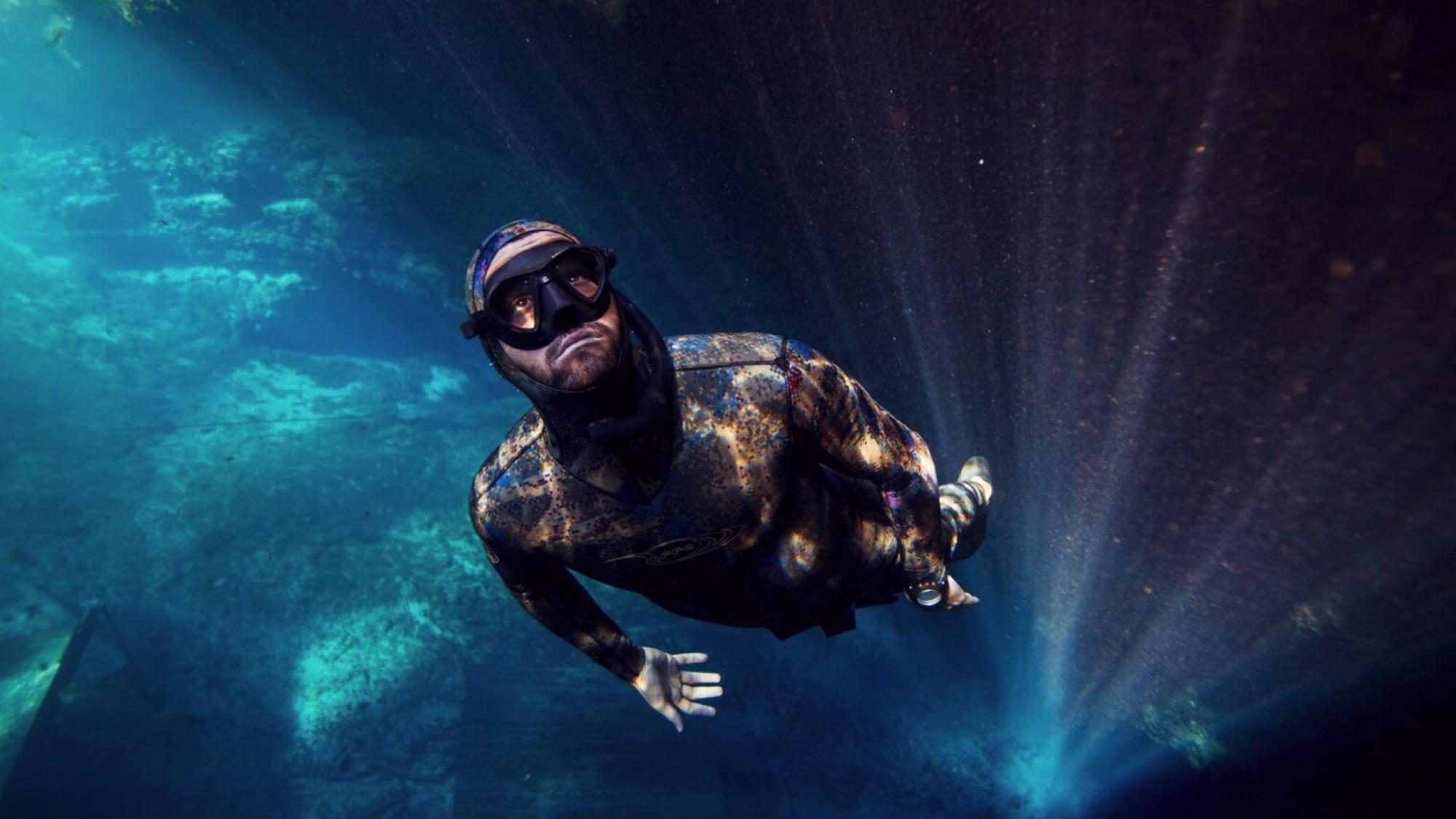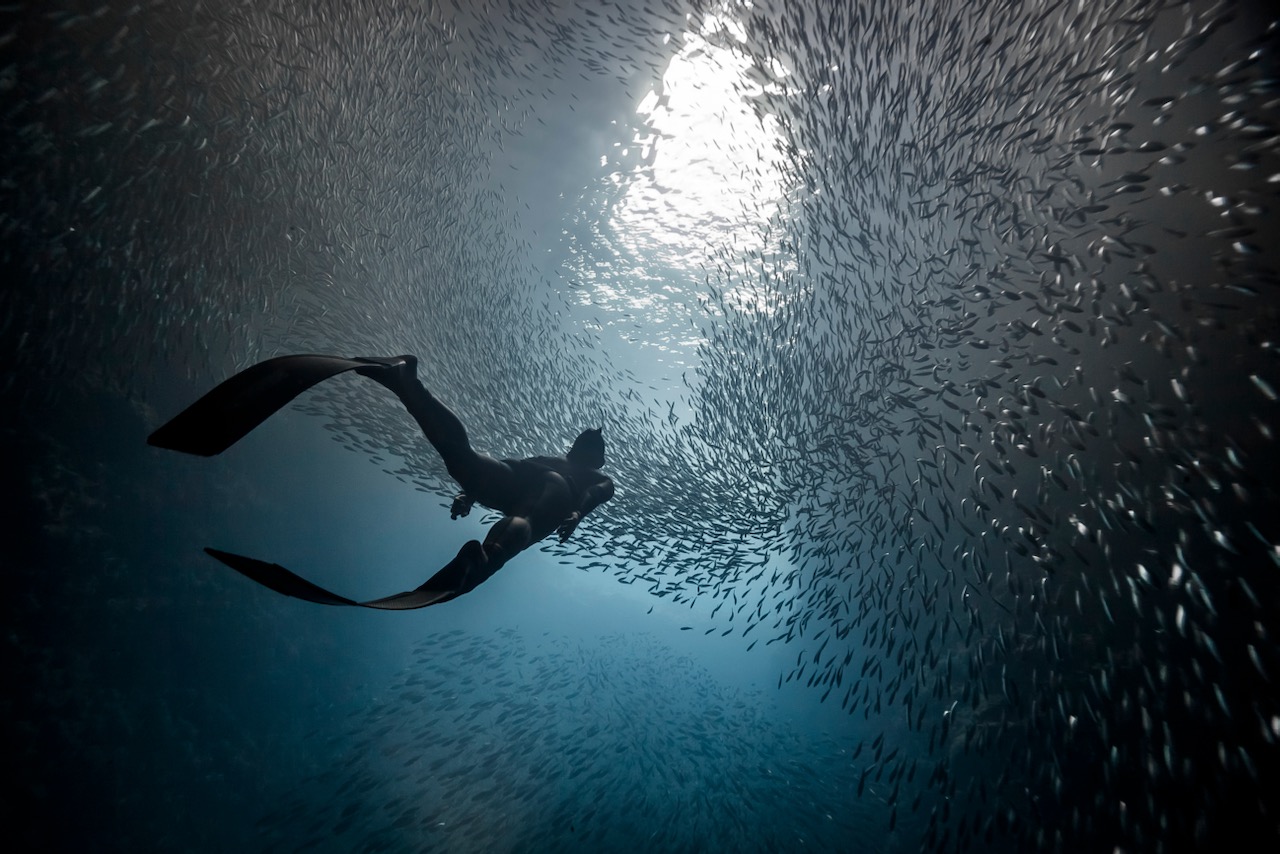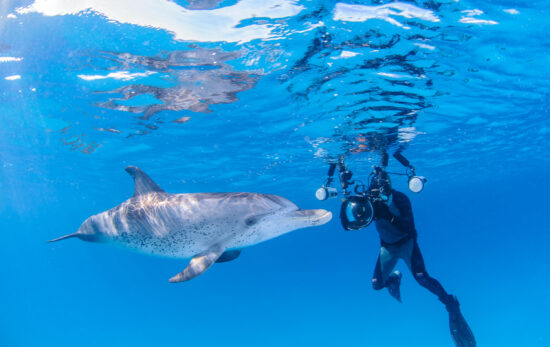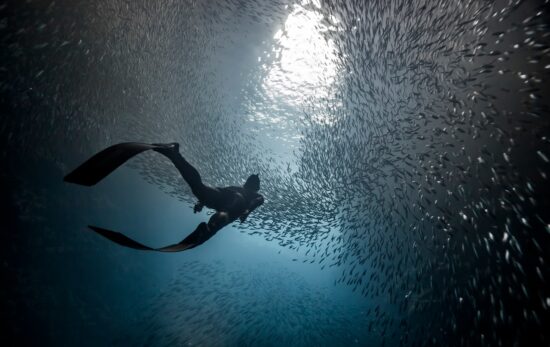“The scuba diver dives to look around. The freediver dives to look inside.” – Umberto Pelizzari
This quote by freediving legend Umberto Pelizzari beautifully captures the essence of freediving. Freediving is an internal journey that tests self-awareness, control, and adaptation. To use another analogy, the PADI Freediver course is like an appetizer, while the Advanced Freediver course serves as the main course.
The Freediver course opens the mind to the possibility that these numbers and depths are just that – numbers. A 90-second breath-hold is well within our limits, and diving 10 meters (33 feet) — the height of a three-story building — is no longer daunting. Our perception of capability shifts, and we begin to believe there is so much more to achieve.
Mental strength is a cornerstone of freediving. The Advanced Freediver course introduces techniques that allow divers to push past perceived limits while maintaining comfort and relaxation.
The Mental Evolution: Relaxation and the Flow State
Relaxation is the foundation of every breath-hold. More than just a preparatory step, it is the gateway to deeper awareness and control. As the outside world fades and intrusive thoughts dissolve, the body instinctively prepares for the dive ahead. This is where freedivers enter a flow state, a seamless blend of instinct and motion, where every movement feels effortless, guided by training and muscle memory.
Subconscious Mind
The subconscious mind is the source of all mental prowess. This applies to all sports. A good example would be Roger Federer, one of the greatest tennis players of all time, who talks about the hours of practice it takes to make his shots “look easy.” That’s what letting the subconscious take over looks like. The subconscious mind takes over and guides you into a flow state.
Mental Conditioning
Mental conditioning shapes how we perceive physical limits. Freedivers often fixate on numbers — depth, breath-hold time, or meters swum in dynamic apnea. But through training, we learn that these numbers are just markers, not barriers. The real progress comes when we shift our focus from counting to feeling, trusting the body’s ability to adapt, stretch, and perform beyond perceived limits.
As a veteran with a decade of military service, I initially viewed numerical goals as targets to be pursued relentlessly. However, I fundamentally shifted my perspective thanks to my freediving instructors: Shonali Ghosal, Svetlana Gaidai, and Sergey Busargin. They instilled in me the understanding that age, weight, and depth are merely numbers, possessing value only if we assign significance to them.
Adopting this mindset enables the enjoyment of the journey toward a goal without succumbing to the pressure of arbitrary metrics. Noteworthy examples include Natalia Molchanova, who commenced her freediving career in her 40s, and Alessia Zecchini, who had to wait until she turned 18 to participate in certain depth competitions.

The Physical Evolution: Efficiency and Endurance
The physical aspect of more advanced freediving is about refining techniques to make each movement count while increasing endurance and safety.
- Advanced Equalization Techniques: During the PADI Advanced Freediver course, we build a deeper and more aware response to equalization, which makes every subsequent dive easier than the one before. It becomes muscle memory, ensuring controlled and comfortable descents.
- Dynamic Efficiency and Finning Mastery: Proper finning technique is crucial for maximizing propulsion while conserving energy. Advanced freedivers refine their flutter kick and no-fins (CNF) techniques, making them more hydrodynamic and reducing exertion.
- Extended Breath-Hold: Advanced training includes longer static apnea breath-holds and dynamic apnea drills, helping divers adapt to high CO₂ levels while staying relaxed.
- Discover Your Own Body: There is a big emphasis on stretching, flexibility, and strength in the freediving world. Some practices are borrowed from yoga, Pilates, swimming drills, and CrossFit. All of it comes together in a dive. Static apnea, a discipline that is the foundation of freediving, teaches us to scan our body and relax every part of the body, all without moving.
- The Ocean: There is something very calming and therapeutic about being in the ocean, about the feeling of moving through the vast ocean and floating through a zero-gravity-esque environment. The awareness of each tiny movement of the hands, feet, and fins is priceless. 20 meters (66 feet) below the surface, it’s as much of an alien world as you can find on Earth, yet it’s also the place where you feel the most at peace.

Environmental Aspect
Having learned all these skills and techniques, the ocean is no longer seen with fear but instead as a safe space that all freedivers respect. She is but an expression of nature. And herein comes one of the most satisfying aspects of freediving: marine life.
Freediving opens an avenue to explore marine life and interact in a way that is least stressful for both humans and fish. I must say, though, the fish are quite tolerant of our loud scuba gear and constant paparazzi tendencies, especially clownfish.
But go “sans tanks” and swim through a bait ball of fish, and you can hear the swoosh of a thousand fish as they change direction. Stay motionless, and they will envelop you within their folds. There are other experiences, like swimming with whales in Tonga, which can only be done as a freediver, where scuba diving isn’t allowed. There is something magical about being face-to-face with any animal, and for those few fleeting moments, I like to believe that I, too, am a fish.
“The sea does not belong to tyrants. On its surface, they can still exercise their iniquitous rights, fighting, destroying one another, and indulging in their other earthly horrors. But thirty feet below its surface their power ceases, their influence dies out and their domination disappears! Ah, Monsieur, one must live—live within the ocean! Only there can one be independent! Only there do I have no master! There I am free!” – Jules Verne
Further Courses
All the PADI Freediver Programs, from Basic Freediver to Master Freediver, are structured incrementally to help you safely explore and discover the boundaries of your own body. They are designed to take novice freedivers through the process of understanding the techniques and drills needed to hold their breath for longer, move more efficiently, and enjoy the process of achieving something that has been all you.
Written by Guest Blogger Akshay Thatte, PADI Freediving Instructor Trainer at Kaizen Freediving, Koh Tao , athlete, and Indian Army veteran. Follow his insights on freediving and mindset on his Substack: Into the Blue.

